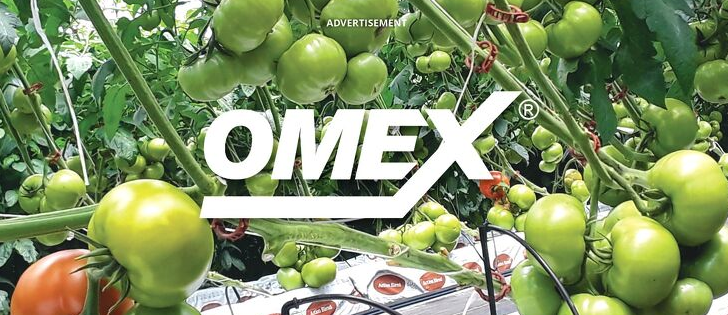Apr 13, 2021Notes from a Penn farm


{Sponsored} “High-tech, high-input, high-output” — that’s how fifth-generation Kegan Wright describes his vegetable enterprise at Rochester Mills, Pennsylvania. Growing over 100 acres of mixed vegetables, field and protected, on his 300-acre farm, Kegan supplies four warehouses and multiple grocery stores in addition to three roadside markets of his own.
The last time we caught up with Kegan was at the end of the summer. “The hot summer!” he says. “We’d had a month without rain and temperatures in the 90s.
“Now it’s at the other extreme. This morning’s temperature was just five degrees above zero. We shut down the greenhouses on Jan 1 and right now, we’re usually going through all the maintenance on the unit. But this ‘polar blast’ has got us doing other things instead — it’s just too cold to do useful work outside!”
Instead, he’s using the time to put into practice some new ideas — and varieties — for this season’s tomatoes. “I’ve picked up 2,000 plants this morning, all of which my supplier has grafted onto my preferred rootstock.
“Dixie Red is my go-to variety,” Kegan says. This determinate variety, a Seminis hybrid, has become a popular choice with growers thanks to its large fruit and improved resistance to pests such as root-knot nematodes, and diseases including wilt, Alternaria, Fusarium and Verticillium.
“Size-wise, it’s perfect for the fresh market. Our nutrient regime centers on Cell Power® SizeN® Ca — it’s a stabilized amine nitrogen that we apply as they come out of blossom — and this finishes the fruit to a perfect size.”
In addition to the Dixie Reds, Kegan’s also trialing 3345, a new variety with indeterminate habit that’s just become available. A slicer — fruits weigh about 10 to 14 oz — Kegan says he’s keen to see whether it fulfils its promise of minimum pruning, maximum fruit.
“Where I’m growing these in the field, I’m going to put them on 6ft stakes and head them. I think they’ll have great potential as a field tomato.
“Inside, we’re also trying something different with the tomatoes this season. I switched to hydroponic growing some years ago, after getting concerned about some soil issues in the high tunnels, so we now routinely use coir slabs as the growing medium.
“But this year I’m going two weeks earlier with planting, and we’ll grow these 2,000 young plants in transplant blocks first. Then we’ll put these straight onto the main slabs.
“The transplant process does stress the young plants and they always need some extra care — a dose of nutrients, essentially — to get them through it. But if we don’t stress them, then they don’t need the care and we can save some costs early in the season.”
Kegan’s also thinking ahead to planting this year’s sweetcorn, which is sold through the three roadside markets. “This is a big crop for us; I’m planting around 35 acres this year.
“Thanks to some good nutrient management, I’ll expect to pick around 1800-2200 dozen to the acre. That’s quite a contrast to the 600 dozen that Penn State Extension gives as an expected yield.”
Kegan puts the sweetcorn success down to the starter fertilizer he trialed last year, a 5-10-5 OMEX® blend, applied at 2 qts/ac alongside 8 oz of Lif-Omex. Applied as a foliar feed, Kegan noticed that treated plants developed more fine feeder roots, which he thinks made them more tolerant of drought.
“Leaf-rolling in the starter-treated fields started a whole week later than those treated with the previous fertilizer blend,” enthuses Kegan. “And I could apply the OMEX® product at just 2 qts/ac, rather than the 12-½ gallons of the alternative. It was eye-opening to get such a good result from seemingly applying less product.”
Nutrition is generally Kegan’s top priority. “Generally, it costs the same to have a poor crop as a good crop — you’re still putting the same time, effort and basic inputs into it.
“My thinking is that with those fixed costs, it’s worth spending what amounts to only a few extra dollars if it’s going to give you a heavier, higher yielding population in the field or tunnel.
“I take tissue samples bi-weekly once the season’s underway in earnest, so that we keep on top of crops’ needs and wants,” he says. “Once you get to know your crops and your land, you’ll know what they’re going to say before you get the results.
“But in my view, everything else being equal, you’ll get out what you put in. That’s how we continue to get the most from our acres.”
Learn more at www.OMEXusa.com.
The product names and brands referenced here are registered and trademarks of OMEX® Agrifluids, Inc.
© OMEX® Agrifluids, Inc. 2021.














